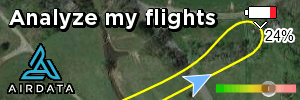I shall find out what mine does in a few days. One must think logically about it. I use various Handi-Talkies overseas. They usually come for a target market. In the old days, like 20 years ago, they did the programming variations by adding resistors across selected pads. This would make them market compliant. We would simply remove them and make the universal, criminals we were. Subsequently, the market specific features are now software. For example, if you go to Japan, your drone will detect it and change its features accordingly. Same for Japanese going to Korea and vice a versa. My drones change when I go abroad. Kind of why there are FCC hacks. It is not a guy with a soldering gun anymore, just trick the software to believe it is in another location where the feature you want is activated. You also have to think about the expense of making small runs of hardware just for specific markets. Makes you wonder why the box is printed in English. DJI is pretty **** about RID, even back with the
Goggles, you suddenly had to plug them into your phone to give it position so it could be RID compliant for controller position. Besides, B&H Adorama ABE and all the folks on 47th street in NY have been the champions of Grey Market for decades in photo gear. Where do you think they are sourcing their stuff? They always went to the lowest price wholesale country and then brought it to the USA. The likes of Nikon and Canon have been at war with them for, gosh my entire adult life. Grudgingly accepting them due to the volume they move. Tarif and specific market pricing kind of like why I could buy a camera in the PX while in the military for about half the price when overseas.










